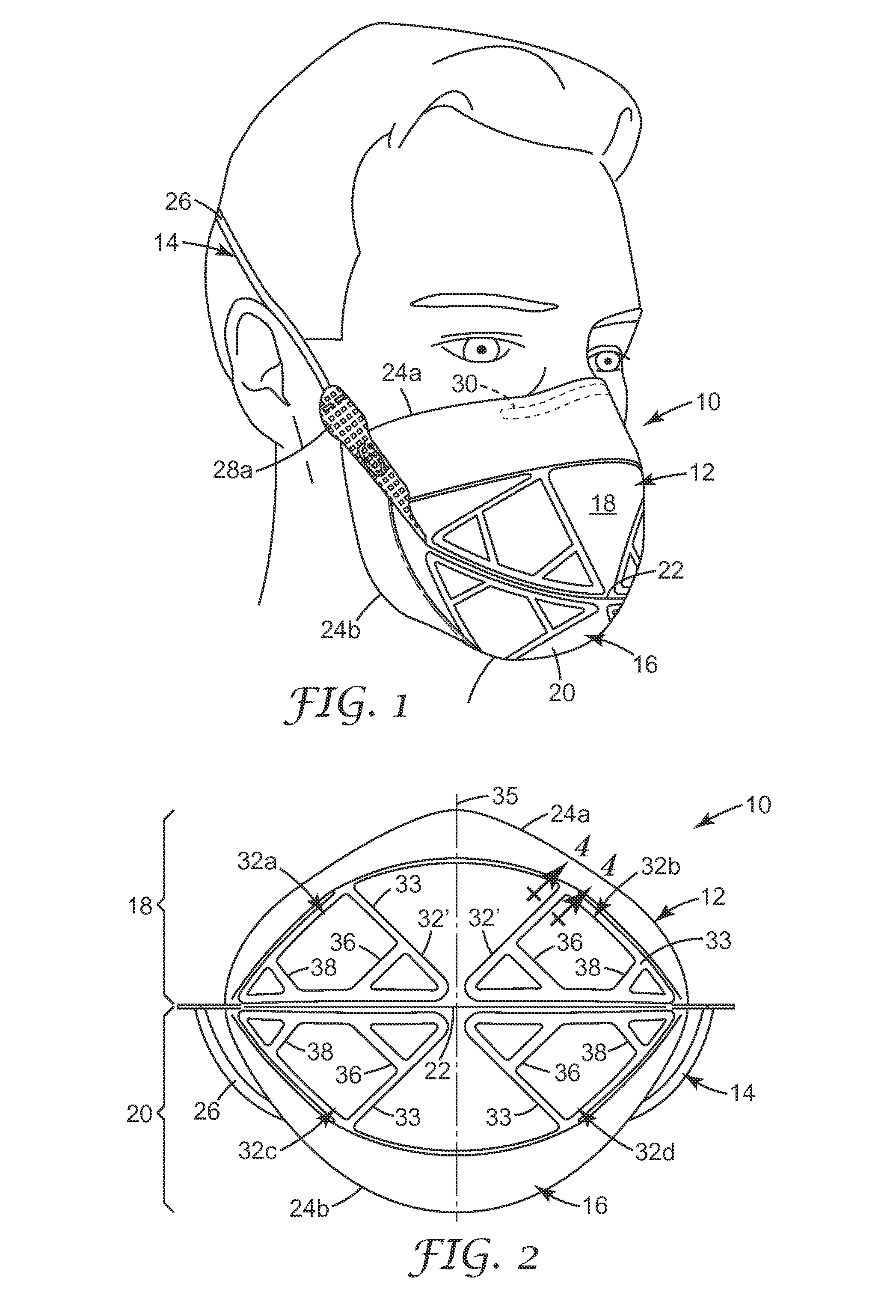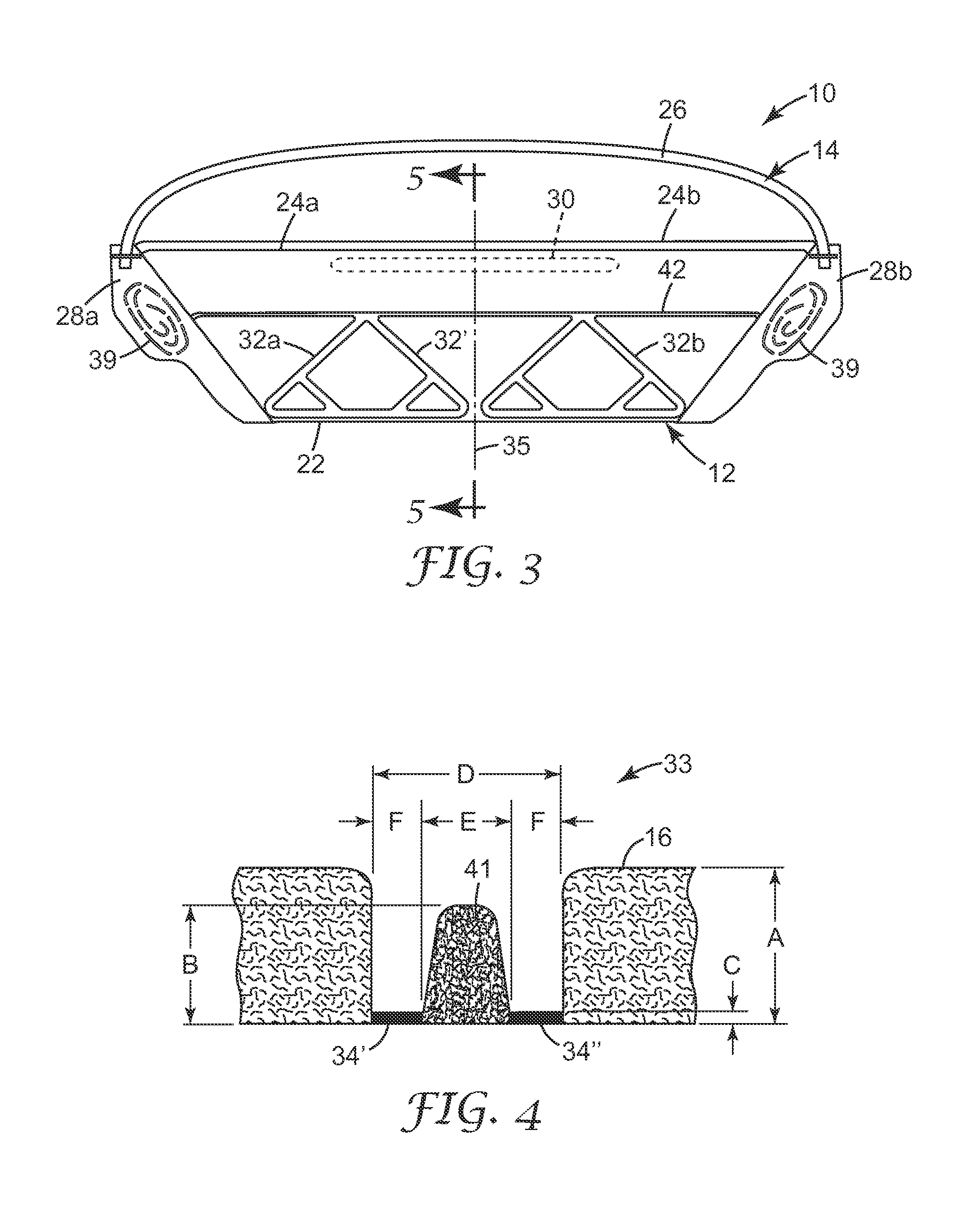Filtering face-piece respirator having parallel line weld pattern in mask body
a mask body and filtering face technology, applied in the field of filtering facepiece respirator having parallel line weld pattern in the mask body, can solve the problems of reduced product cost and lower breathing resistance, and achieve the effect of preventing the mask body from collapsing during us
- Summary
- Abstract
- Description
- Claims
- Application Information
AI Technical Summary
Benefits of technology
Problems solved by technology
Method used
Image
Examples
examples
[0069]The invention improves the collapse resistance of flat-fold filtering facepiece respirators by increasing the stiffness of portions of the respirators, for example, 32a, 32b, 32c and 32d in FIG. 2. This is accomplished by using heat to compress and bond together the layers of the filtering structure 16 in FIG. 1. The Taber Stiffness Tester (Taber Industries, North Tonawanda, N.Y., USA) can be used to measure the stiffness of a variety of materials, including nonwoven materials which are often used in the construction of filtering facepiece respirators.
[0070]The Taber Stiffness Tester measures the stiffness of a strip of material by determining the amount of torque required to deflect the sample by a specified amount, typically 15°. The result of a test conducted with the Taber Stiffness Tester is reported in Taber Stiffness Units. One Taber Stiffness Unit is defined as the stiffness required for 1 cm long sample to be deflected 15° when a torque of 1 gm-cm is applied to one en...
PUM
 Login to View More
Login to View More Abstract
Description
Claims
Application Information
 Login to View More
Login to View More - R&D
- Intellectual Property
- Life Sciences
- Materials
- Tech Scout
- Unparalleled Data Quality
- Higher Quality Content
- 60% Fewer Hallucinations
Browse by: Latest US Patents, China's latest patents, Technical Efficacy Thesaurus, Application Domain, Technology Topic, Popular Technical Reports.
© 2025 PatSnap. All rights reserved.Legal|Privacy policy|Modern Slavery Act Transparency Statement|Sitemap|About US| Contact US: help@patsnap.com



